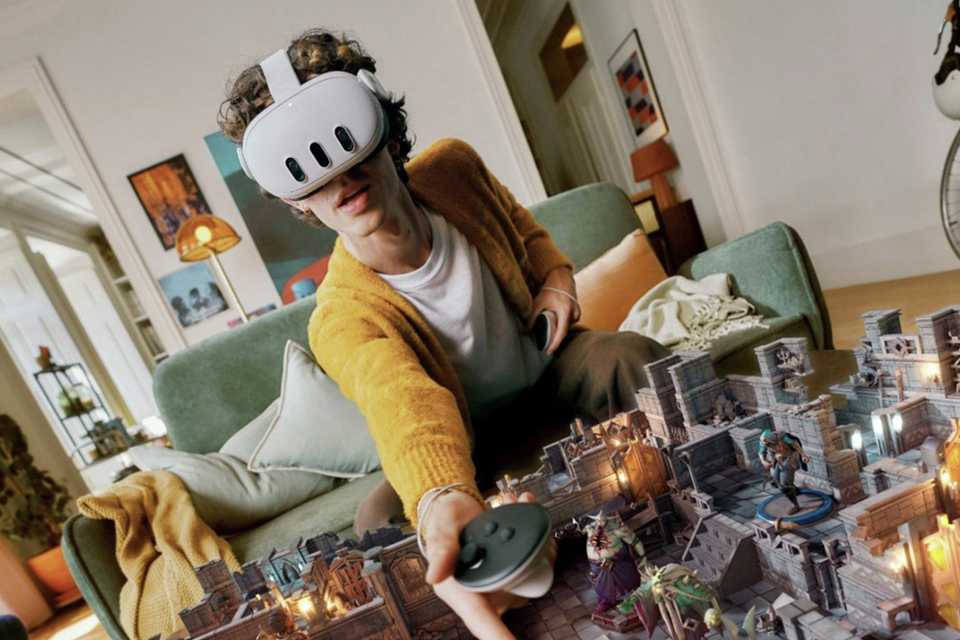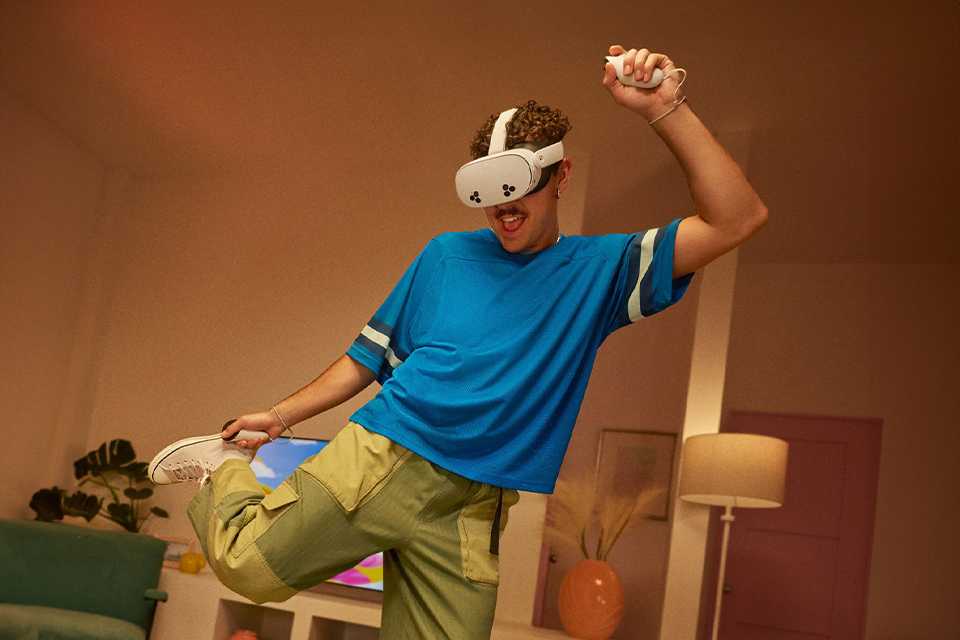VR headset buying guide
VR gaming on mind? Whether it's for gaming or productivity - let's help you choose the best virtual reality headset for your needs.
Shop all VR headsets and accessoriesVR gaming on mind? Whether it's for gaming or productivity - let's help you choose the best virtual reality headset for your needs.
Shop all VR headsets and accessories&poi={$this.metadata.pointOfInterest.x},{$this.metadata.pointOfInterest.y},{$this.metadata.pointOfInterest.w},{$this.metadata.pointOfInterest.h}&scaleFit={($this.metadata.pointOfInterest.x>0)?$sfpoi:$sfcenter}&sm=aspect&aspect=2:1&sfcenter=center&sfpoi=poi&qlt=50&fmt=auto&noiser=0&fmt.jpeg.interlaced=true&fmt.jp2.qlt=40&)

What if... you could walk into the war zone of your game, collaborate with your team, exercise on the beach, or just attend a concert happening miles away, all from the comfort of your home? Well, VR has made it possible. It is a computer-generated 3D environment in which you can interact with or explore pretty much anything using VR headsets and controllers.
What is a VR headset?
Also known as VR Goggles, it is a head-mounted device that covers your eyes to help you see and experience the virtual world around you. It provides a separate image for both your eyes to let you see in 3D and includes stereo sound and onboard tracking cameras to track your pose to align with the display. You get a lifelike experience.
How can you use VR?
VR is predominantly used for gaming, but it is becoming increasingly useful and popular as a productivity tool and a streaming device.
Every VR platform has something different to offer. From gaming to viewing and working out to streaming - look for a kit that best support your needs. Some products will include everything you need to experience VR, but not all. So, we suggest you check what is included before you make your purchase.
To begin with, there are 3 VR platforms to choose from:
To start VR gaming, if you already have a console or a PC, pick a VR headset that supports it. If you don't, then a standalone VR headset is a great option.

Looking for a wider variety of content for your VR experience? Meta Quest (earlier Oculus) is the one for you. From gaming to productivity and everything in between, explore our range of Meta Quest products to find just the right fit for you.

You can find a wide selection of games on the PS Store within the PS5 operating system.
Meta Quest games can only be purchased through Meta's dedicated VR store. You can purchase Meta Currency from Argos as gift cards.
For Pico VR games, you can buy the games directly from the Pico store, accessible within the VR headset or the Pico App. You can also connect Pico headsets to a gaming PC and access a vast library of PC VR titles there.
You can play some non-VR games on VR headsets. All PS5 games can be played through the PS VR2 headset and all PS4 games can be played using the PS VR1 headset in cinematic mode (as a big virtual 2D screen).

Many VR games allow you to choose the preferred level of movement within the virtual environment. This means you can adapt the game to suit the space you have. For instance, driving games are designed to be played while seated, providing an immersive experience without the need for extensive movement. On the other hand, some games may offer options to explore the virtual world more extensively.
As a guide, the minimum clear space you will need for seated VR experiences is approximately 1 square metre. This allows you to sit and move comfortably within the virtual environment.
If you want to move around more, it is recommended to have at least 2 metres of clear space. This will allow you to physically navigate within the virtual environment and enhance the experience by providing more room for movement and interaction.
VR headsets are not recommended for children under 13, as they are at greater risk of injury, and can impact eye development. While they offer tons of options, parental controls help you in ensuring age-appropriate experiences, limit access to certain apps or content, and manage usage time to promote safe and responsible VR use.
Augmented reality (AR) is a blend of the real world and VR. Images are rendered as an overlay on top of what you see in the real world. On the other hand, VR is completely computer-generated and the scenes in it appear to be real to make you feel immersed.
If you've ever used Instagram and Snapchat filters, you have already experienced mixed reality (MR). It is a blend of the real world and the digital world where elements can interact with each other.
FOV is the area you can see when you put the VR headset on. A wider field of view means you can see more of the virtual world around you. It's like having a larger window that lets you take in more of the virtual environment.
Choosing a headset with a high-resolution display allows you a crisp and immersive visual experience. Plus, a higher refresh rate means the images on the VR headset's display change more frequently, creating smoother movements. It helps to reduce motion blur and makes the virtual world feel more realistic.
It renders the part of the screen you are looking at in high resolution, whilst the other parts are rendered at a lower resolution to save on processing power.
A wireless VR headset offers freedom of movement without being connected to a computer or console, making the immersive experience better. It allows you to freely explore virtual environments, eliminates the risk of tripping over wires and cables, and provides greater convenience for both gaming and non-gaming applications.
Tracking systems determine how accurately a headset tracks your movements. Many VR systems need an external sensor or camera to track your physical movements with accuracy, helping determine the position of your headset and controllers in the virtual environment.
VR headsets generally use a USB-C port for charging, but some require batteries. If you are travelling, it’s best to have a power bank with suitable output and adequate capacity to charge your VR headset (or just carry replacement batteries).
VR sessions are generally lengthy, so comfort is key. Always look for a headset with adjustable straps, enough padding, and good weight distribution. Factors like ergonomics and ventilation ensure a comfortable fit.
Quantum dot displays are great as they show vibrant and lifelike colours, offering an improved picture quality. This makes them popular in a range of electronic items, including televisions, computer monitors, and mobile devices. They emit pure red, green, and blue light when stimulated by electricity. In a quantum dot display, these dots are placed in a layer above the backlight. When the backlight shines through the dots, they convert the blue light into vivid red and green lights, resulting in more accurate colours on your screen.
Haptic feedback are the vibrations that match the action on the screen. Headset haptics vibrate the whole headset, and that's unique to PS VR2. Most other platforms use controller haptics to add a level of realism to your interactions with the VR world.
Oculus is simply the old name for Meta Quest. Meta changed the name of the Oculus range to Meta Quest in 2022.
Yes, you can wear glasses with a VR headset. The glasses may get pressed against your head slightly, so smaller glasses frames are better to reduce this. Some headsets also have additional spacers to create more room around the eyes to make wearing glasses more comfortable. It is advisable to put the VR headset over your glasses first and then stretch the strap over the back of your head second to avoid any sudden pressure on your glasses and face.